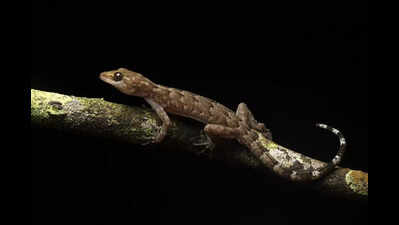ARTICLE AD BOX

Cyrtodactylus kazirangaensis
Guwahati: A rapid biodiversity survey conducted by the Kaziranga National Park and Tiger Reserve (KNPTR) authority, in collaboration with scientists from the Wildlife Institute of India (WII), has revealed a thriving aquatic world beneath the park’s iconic grasslands.The survey documented 77 species of freshwater fish, representing a significant share of Assam’s 216 native fish species and contributing to the northeast’s total of 422 native species. Researchers also recorded 108 species of amphibians and reptiles, accounting for over 50% of the 274-plus herpetofaunal species known in the northeast — far surpassing the 70-plus species previously recorded elsewhere in the state.Conducted between July and Sept, the survey marks a major step toward strengthening ecological knowledge of the Unesco World Heritage Site.CM Himanta Biswa Sarma hailed Kaziranga as a “vibrant emblem of Assam’s natural heritage,” adding that the discovery of 108 herpetofaunal species reflects the govt’s ongoing conservation efforts and the dedication of forest officers and frontline staff.KNPTR field director Sonali Ghosh said, “The diversity of fishes and herpetofauna highlights the pristine habitats the park provides.
Amphibians and reptiles serve as key indicators of ecosystem health.”In the ichthyofaunal study, researchers recorded 44 fish species from 18 families, with Cyprinidae and Danionidae being the most dominant. Combining previous studies, Kaziranga’s freshwater fish diversity now stands at 77 unique species, including species of conservation concern such as Wallago attu (vulnerable) and Parambassis lala (near threatened).
The report calls for long-term monitoring and stronger conservation measures to counter threats like climate change, siltation, altered hydrology and unregulated fishing.Separately, the KNPTR and Wildlife Institute of India released a detailed report titled “Herpetofaunal Diversity at Kaziranga,” documenting 31 species—17 amphibians and 14 reptiles—from 19 genera and 14 families. Amphibians were most abundant along forest trails and streams, while reptiles showed higher richness in stream zones.

 1 hour ago
5
1 hour ago
5








 English (US) ·
English (US) ·